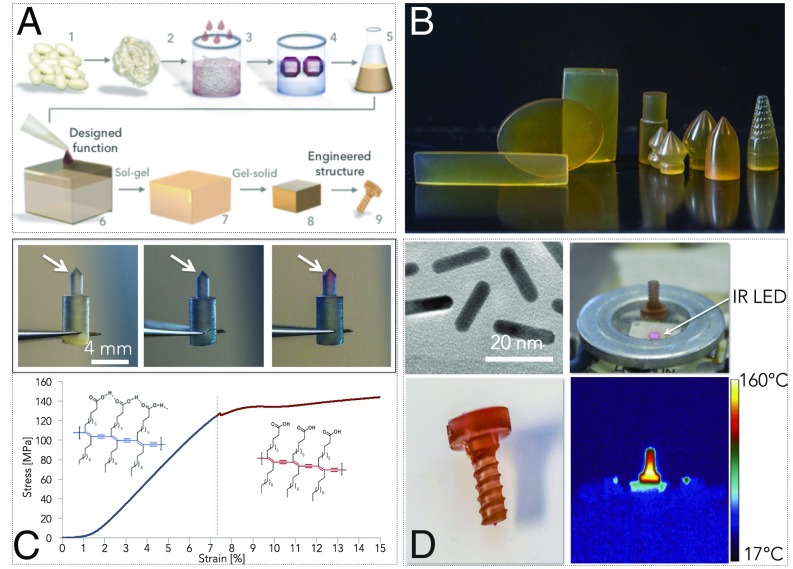Fig. 4.
Engineered silk fibroin constructs with designed functions. (A) By adding water-soluble molecules to the silk suspension at the point of material self-assembly, it is possible to impart designed functions to engineered silk fibroin materials. (B) Examples of engineered 3D silk constructs. (C) Polydiacetylene (PDA) vesicles may be added to silk fibroin suspensions at the point of material self-assembly to fabricate a hybrid material that transduces internal strain by colorimetric changes. For example, silk fibroin–PDA pins undergo to a blue-to-red chromatic transition when the force applied reaches the yield point of the material. (D) The inclusion of gold nanorods in silk fibroin enables the formation of a hybrid material that can be heated by applying a light that matches the plasmonic resonance of the nanoparticles. For example, a silk fibroin screw fabricated with gold nanorods can be heated up to 160 °C when exposed to the infrared light (850 nm) emitted by a LED.

